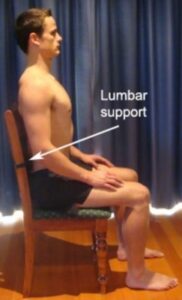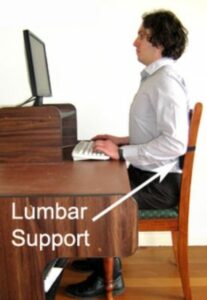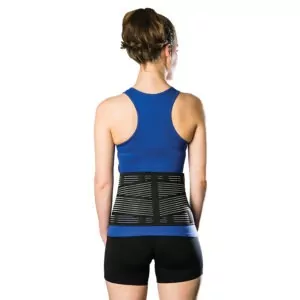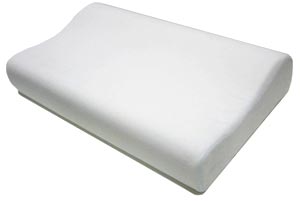Ergonomic Computer Setup
Updated:
Importance of ergonomic computer setup
Maintaining correct posture whilst sitting at a computer is extremely important to minimize stress on the spine and reduce the likelihood of injury. This is particularly important due to the high prevalence of injuries in society due to poor ergonomic computer setup, long hours of work in front of a computer and a sedentary lifestyle. Low back pain, neck pain, shoulder pain and headaches are all common injuries that can occur from having your office, desk or computer set up incorrectly.

Ergonomic sitting
When sitting at your desk the following ergonomic points should be considered:
- It is important to have an ergonomically correct chair which offers firm support, encouraging your body to maintain optimal posture.
- The height of the chair should allow your hips and knees to be at right angles (it is important not to have your knees higher than the level of your hips) and your feet firmly supported on the floor (a foot stool may be required).
- Your bottom should be situated at the back of the chair and a lumbar support (that is comfortable for you) should be placed in the small of your back.
- Your shoulders should be held back slightly and your chin should be tucked in a little (figure 1).
- A ‘Kneeling Chair’ or ‘Swiss Ball’ can sometimes assist in reducing the stress on the lumbar spine and assist with maintaining good posture whilst working at a desk.
How to create an ergonomic computer setup
When sitting at a computer desk, the goal is to organize your environment ergonomically so you can easily maintain correct posture (figure 2). The following ergonomic points should be considered:
- The height of the desk should allow you to have your elbows bent at approximately 90 degrees.
- Provided you can touch type, your keyboard should be close to you. If you have to look at the keys, it should be as close as possible so you can look down at the keys (using your eyes only) without having to bend your neck.
- Your mouse, telephone and other accessories (that you use regularly) should be as close as possible to prevent you having to lean forwards or to the side to reach them.
- Your computer monitor should be positioned directly in front of you, at, or slightly, below eye level (certainly not to the side or above the level of your eyes).
- Your chair should be situated as close to the desk as possible.
- Actively practise holding yourself in good posture during sitting and check your position regularly to ensure you have not resumed slouching.
- Regular breaks from sitting are recommended with standing, walking or lying (in optimal posture) and should occur regularly enough to prevent any onset of pain.
- It is good practise to regularly switch the side of your body you use to perform various tasks to maintain balance and give one side of your body a break from repetitive or prolonged stress (e.g. use the mouse in your left and right hands equally)
- Performing regular exercises can also assist in preventing a posture related injury by giving your body a break from the continuous stress of sitting in one position.

Office Exercises

Members Only ContentBecome a PhysioAdvisor Member to gain full access to this exclusive content. For more details see Become a Member. Already a member? Login Now
Keep Active

Members Only ContentBecome a PhysioAdvisor Member to gain full access to this exclusive content. For more details see Become a Member. Already a member? Login Now
Ergonomic Computer Setup Summary

Members Only ContentBecome a PhysioAdvisor Member to gain full access to this exclusive content. For more details see Become a Member. Already a member? Login Now
 Physiotherapy Products to assist with Ergonomic Computer Setup and office related injuries
Physiotherapy Products to assist with Ergonomic Computer Setup and office related injuries
-
 AllCare Ortho Light Back Support
AllCare Ortho Light Back Support -
 OPPO – Posture Aid / Clavicle Brace (OPP2075)
OPPO – Posture Aid / Clavicle Brace (OPP2075) -
 Premium Strapping Tape 38mm (Victor)
Premium Strapping Tape 38mm (Victor) -
 AllCare Tubing
AllCare Tubing -
 AllCare Spikey Massage Ball
AllCare Spikey Massage Ball -
 AllCare Foam Roller Round
AllCare Foam Roller Round -
 McKenzie Treat Your Own Neck Book
McKenzie Treat Your Own Neck Book -
 Dentons Impressions Classic Memory Foam Therapeutic Pillow
Dentons Impressions Classic Memory Foam Therapeutic Pillow -
 Lumbar Rolls (‘D’ Shaped)
Lumbar Rolls (‘D’ Shaped)
To purchase physiotherapy products to assist with ergonomic computer setup and office related injuries click on one of the above links or visit the PhysioAdvisor Shop.
 Find a Physio
Find a Physio
Find a physiotherapist in your local area who can help with improving your ergonomic computer setup.
 Injury Information
Injury Information
Click on the appropriate link below to view detailed injury information on some common office related injuries:
- Cervical Postural Syndrome
- Thoracic Postural Syndrome
- Lumbar Postural Syndrome
- Cervical Disc Bulge
- Thoracic Disc Bulge
- Lumbar Disc Bulge
- Cervicogenic Headache
- Rotator Cuff Tendonitis
 More Information
More Information
- View detailed information on Improving Your Posture.
- View Postural Exercises.
- Learn about Postural Taping.
- View Beginner Pilates Exercises to help improve posture.
Become a PhysioAdvisor Member

Link to this Page
If you would like to link to this article on your website, simply copy the code below and add it to your page:
<a href="https://physioadvisor.com.au/health/ergonomics/ergonomic-computer-setup”>Ergonomic Computer Setup – PhysioAdvisor.com</a><br/>PhysioAdvisor offers expert physiotherapy advice and health information on ergonomic computer setup and ergonomic office setup.
Return to the top of Ergonomic Computer Setup.

